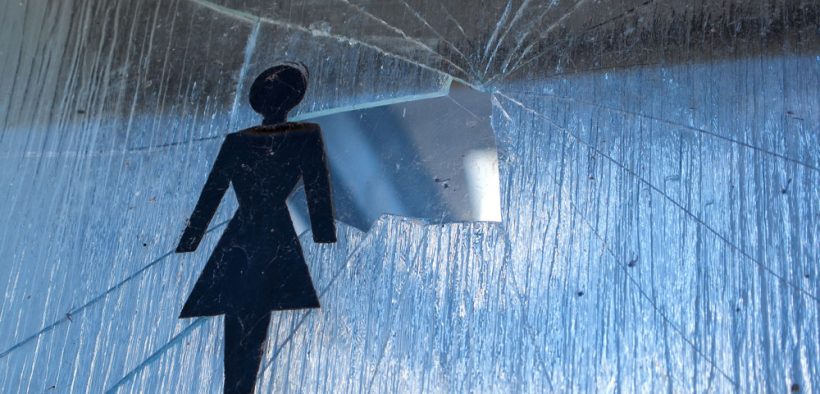Identifying rape victims: What does the law say in Bangladesh?

Bangladeshi law does not permit the publication of the identity of rape victims, but many media organizations are clearly violating this prohibition
The recent news of a school girl’s alleged rape and murder in Dhaka has caused citizens to demand justice. Other than outrage at the incident, concerns have been raised also relating to the publication of the victim’s identity by news organizations, which included names and photos of the deceased teenager.
A great majority of the country’s news organizations — print and online — as well as posts social media have been repetitively publishing photographs, name and personal details of the deceased rape victim, causing an unfortunate shift of focus the justice process to the deceased victim and her family.
Bangladeshi law does not permit the publication of the identity of rape victims, but many media organizations are clearly violating this prohibition
The recent news of a school girl’s alleged rape and murder in Dhaka has caused citizens to demand justice. Other than outrage at the incident, concerns have been raised also relating to the publication of the victim’s identity by news organizations, which included names and photos of the deceased teenager.
A great majority of the country’s news organizations — print and online — as well as posts social media have been repetitively publishing photographs, name and personal details of the deceased rape victim, causing an unfortunate shift of focus the justice process to the deceased victim and her family.
Does the law permit disclosure and publication of the identity of rape victims?
There is an apparent strict prohibition on the publication of identity-details of victims of crimes committed under the Nari-O-Shishu Nirjatan Daman Ain, 2000 (the prevention of oppression against women and children act, 2000).
Section 14 (1) of Nari-O-Shishu Nirjatan Daman Ain, 2000 provides that “Any news, information or name and address or any other information regarding any offence, under this Act, committed or any legal proceeding thereof, of which a woman or a child is the victim, shall be published or presented as such that the acquaintance of the woman or the child shall be undisclosed.”
It appears from the plain reading of this section that disclosure of the identity of rape victims is strictly prohibited. If the restriction is violated, the offender will be liable under section 14 (2) of the 2000 Act, which is punishable by 2 years of imprisonment or a maximum fine of Tk1 lakh, or both.
It is evident that the above section is not being complied with by most of the media organizations while reporting cases on sexual offences.
Why the identity of rape victim should not be published?
The publication of identity of victims seems to have fuelled a prevailing social practice of victim-blaming, where victims are judged by their appearance and clothing. A diminishing of sympathy for the victims and their families occurs through such judgments. The society makes the victim partly responsible for the offence.
The Supreme Court of India, in Nipun Saxena vs Union of India Ministry of Home (2018) unequivocally held that “No person can print or publish in print, electronic, social media, etc. the name of the victim or even in a remote manner disclose any facts which can lead to the victim being identified and which should make her identity known to the public at large.”
The court also made it clear that “the intention of the lawmakers was that the victim of such offences should not be identifiable so that they do not face any hostile discrimination or harassment in the future.”
The Supreme Court went further and extended the bar on disclosure of identity of the victims who are dead. The Court said that, “[I]n the case of dead victims, we have to deal with another factor. We have to deal with the important issue that even the dead have their own dignity. They cannot be denied dignity only because they are dead.”
It is noteworthy that the Indian Supreme Court in this case also clearly stated that the intimate relationship between a girl and boy is irrelevant in rape cases. The above judgement of the Indian Supreme Court provides a clear rationale as to why the identity of victims of sexual offences should be strictly protected from publication.
Perhaps the most dangerous aspect of publishing identity of rape victims, which then aids victim-blaming, is that it makes reporting of such crimes harder for rape victims. Often, the victims do not even come forward to seek justice because of fear of sullying the so-called ‘honour’ of the family. This culture contributes, no doubt, to the perpetrators evading justice.
Even without the persuasive case law from Indian Supreme Court, section 14 of the Nari-O-Shishu Nirjatan Daman Ain alone provides concrete legal ground for a stop to the publication of any identifying information of victims.
This makes the publication of name and photograph of the deceased school girl by print, electronic and social media publishers a gross violation of section 14 of the 2000 Act.
This also may have acted as the necessary element for ‘victim-blaming’ in this case, which has been happening on social media constantly in most reported rape cases.
It seems absolutely essential now for the judiciary, along with Bangladesh Telecommunication Regulatory Commission (BTRC), Ministry of Information and Communication, and Bangladesh Press Council to take necessary steps to implement the law and protect the identity of rape victims.
Barrister Farzana Sattar is a Supreme Court Advocate and founding partner at the Guardian Chambers.
Advocate Ashiqur Rahman is an Associate at the Guardian Chambers.











